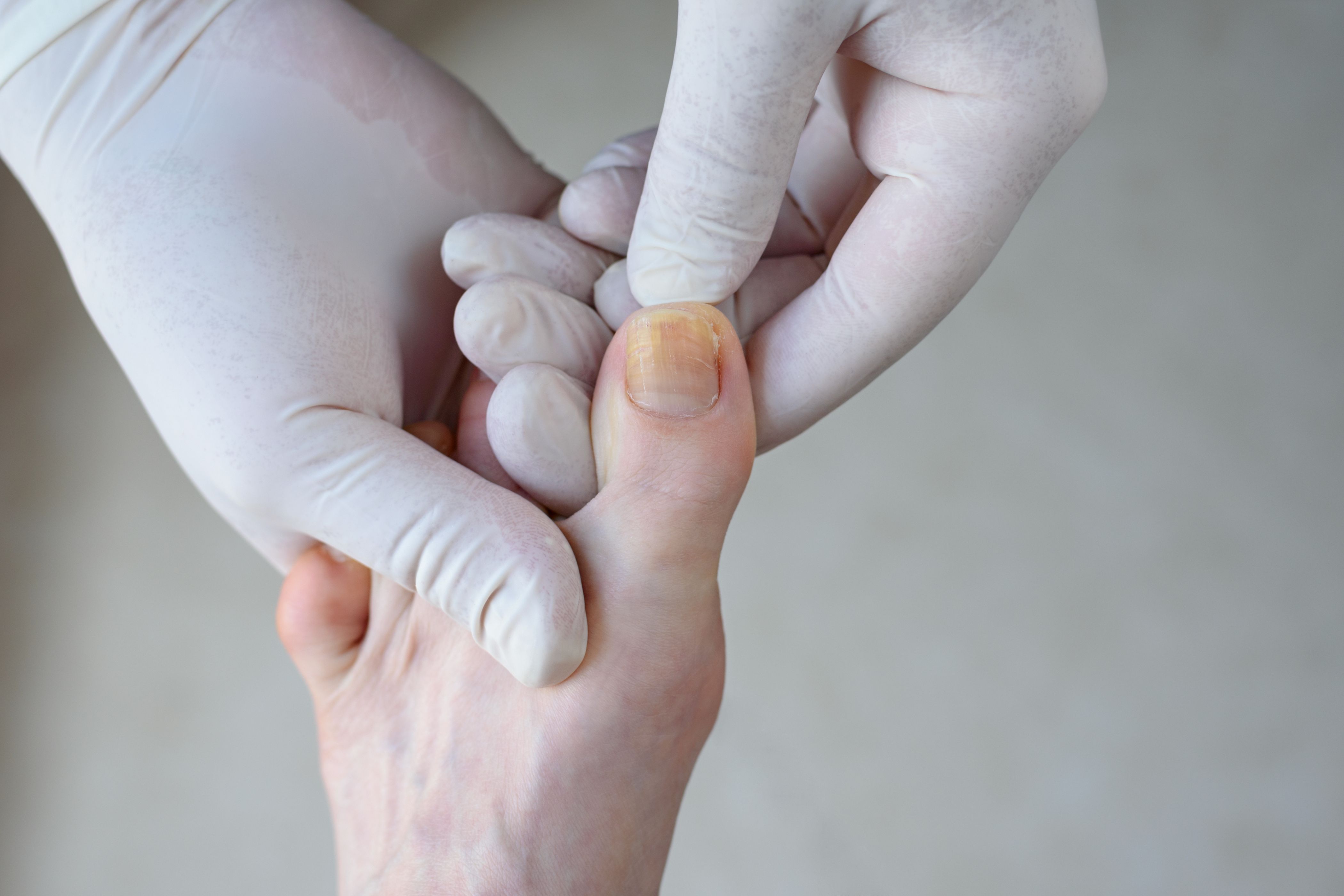- Acne
- Actinic Keratosis
- Aesthetics
- Alopecia
- Atopic Dermatitis
- Buy-and-Bill
- COVID-19
- Case-Based Roundtable
- Chronic Hand Eczema
- Chronic Spontaneous Urticaria
- Drug Watch
- Eczema
- General Dermatology
- Hidradenitis Suppurativa
- Melasma
- NP and PA
- Pediatric Dermatology
- Pigmentary Disorders
- Practice Management
- Precision Medicine and Biologics
- Prurigo Nodularis
- Psoriasis
- Psoriatic Arthritis
- Rare Disease
- Rosacea
- Skin Cancer
- Vitiligo
- Wound Care
News
Article
Novel AI Model Can Accurately Diagnose Onychomycosis
Author(s):
Key Takeaways
- The AI model improves onychomycosis diagnosis, achieving high accuracy in toenail segmentation and infection identification with an IOU score of 0.75 and an F-score of 0.85.
- Utilizing 1604 images from a multicenter clinical trial, the model's Random Forest algorithm achieved 81% accuracy in classifying infected toenail areas.
The algorithm demonstrated 81% accuracy, promising fast, reliable, and reproducible assessments for patients.
Image Credit: © Viktoryia - stock.adobe.com

A newly developed automated machine learning model can improve the assessment and diagnosis of varying degrees of onychomycosis and nail yellowing, as it currently does not have an automated treatment approach.1
Onychomycosis affects roughly 23% of people in Europe, 13.8% in North America, and about 10% in Japan.2 Current diagnosis techniques include direct microscopy with potassium hydroxide, fungal culture, histopathology, and PCR testing.
A total of 1604 images from 344 participants across 25 different European sites were utilized to train the artificial intelligence (AI) model. These were acquired through an international, multicenter, double-blinded, phase 2 clinical trial on the topical treatment of DSO (BBTAF202). Here, patients applied the product twice daily using a low-velocity spray for 12 weeks. The affected area of each patient covered between 25% and 60% of the big toenail.
Images were captured using the Scarletred® Vision mobile iOS app and its corresponding SkinPatch, a CE-certified medical device system. The data also included images of those without infection to strengthen its precision. This combination improved imaging quality and delivered high-resolution, auto-color calibrated clinical images. An analysis of nail growth was performed, and a comparison graph with the percentage of infection was estimated.
The deep learning AI model consisted of “a contraction path for feature extraction and spatial resolution reduction, an expansive path for resolution restoration, and residual connections to preserve information at different scales,” according to researchers. Within the identified nail region, a tissue classification algorithm and neural networks were implemented to correctly analyze growth and the infected areas. The clinical forms of onychomycosis considered in this study were distal and lateral subungual onychomycosis, superficial white onychomycosis, proximal subungual onychomycosis, endonyx onychomycosis, onychauxis, and candidal onychomycosis.
When compared to standard human diagnosis, the novel AI algorithm successfully segmented the toenails and identified the affected areas. A final IOU score of 0.75 and an F-score of 0.85 was achieved for accurate toenail detection. The use of a dimensional filter and combined technologies furthered this accuracy.
Additionally, the Random Forest algorithm demonstrated 81% accuracy in classifying and distinguishing between infected and healthy toenail areas. The model also tracked nail growth over time, thus comparing it to estimated infection percentages. Infection percentages were observed at 56.4%, 63.9%, 64.1%, 47.7%, and 32.7% over the study period.
Several minor limitations, such as the lack of diversity in participants and the limited analysis of only big toenails, may limit the extent of this evaluation. Further research with varied skin tones, nail types, and other skin conditions is recommended to strengthen the validity of this model.
This AI model can contribute to long-term treatment, as clinicians can periodically measure the percentage of infected areas over time, especially in populations where specialized dermatologists may not be as readily available. This can quickly determine whether the onychomycosis is responding to treatment and if alternative therapies should be considered.
“Proven to measure nail growth and assess treatment effectiveness over time, our developed AI is the first of its kind to demonstrate this capability, representing a significant advancement as a novel decision support tool for clinical research and routine medical practice,” the authors wrote. “Our AI algorithms offer considerable potential for the long-term evaluation of onychomycosis, enabling the monitoring of disease progression over time. The validation capabilities of our AI model are a powerful tool in clinical research, offering precise evaluations that contribute to more effective management and treatment strategies for onychomycosis.”
References
1. C. Agostini, R. Ranjan, M. Molnarova, et al. AI powered detection and assessment of onychomycosis: A spotlight on yellow and deep learning. JEADV Clinical Practice. Published 2024 Nov 25.
2. Matsuda Y, Sugiura K, Hashimoto T, et al. Efficacy Coefficients Determined Using Nail Permeability and Antifungal Activity in Keratin-Containing Media Are Useful for Predicting Clinical Efficacies of Topical Drugs for Onychomycosis. PLoS One. 2016;11(7):e0159661. Published 2016 Jul 21. doi:10.1371/journal.pone.0159661
Newsletter
Like what you’re reading? Subscribe to Dermatology Times for weekly updates on therapies, innovations, and real-world practice tips.














